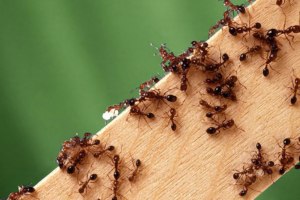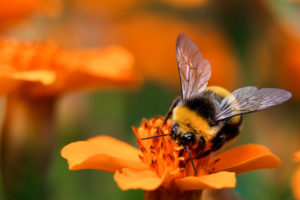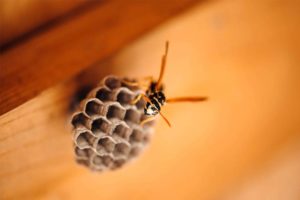The honey bee is named after its ability to make honey from the nectar of flowers. They are social insects and incredibly beneficial because of their role in pollination. Read on to learn how to identify honey bees and avoid their stings.
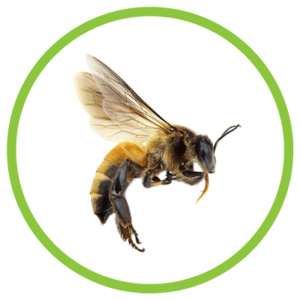
IDENTIFICATION
The Apis mellifera, or Honey Bee, is found worldwide. They can range in length based on gender and status, but most are between 3/8 and 5/8 inches. Honey bee hair varies from light brown to black. Then, their enlarged rear portion of their abdomen contains yellow and black bands. Male honey bees do not have stingers.
WILD HONEY BEE HIVES
Wild Honey Bee hives are best known for their hexagon-shaped wax tubes. Worker honey bees have a unique wax-producing gland inside their abdomen. When they eat nectar, the gland converts sugar into wax. Then, the wax oozes through small pores in their core, creating tiny flakes. They chew this wax until it is moldable and then add it to the hive’s honeycomb structure.
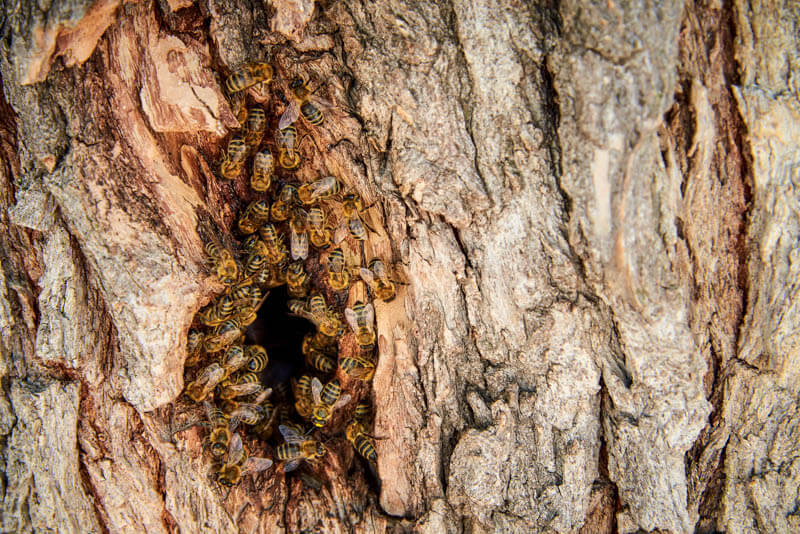
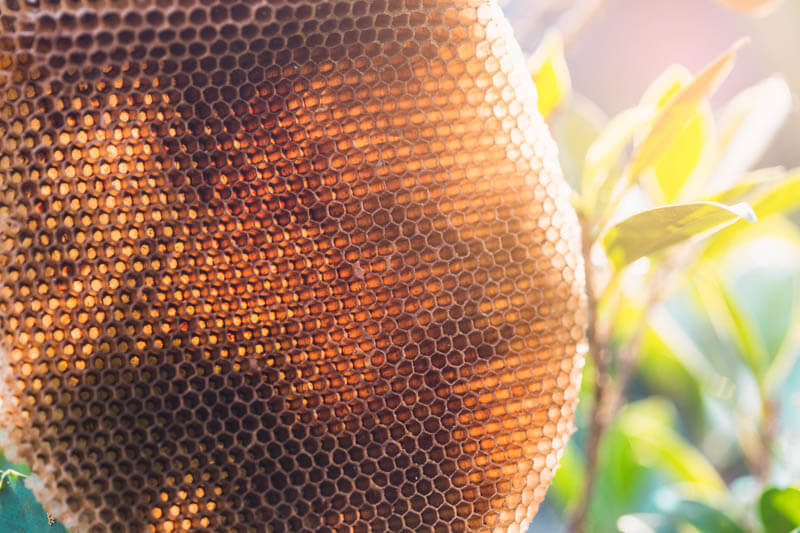
Where are they found? Honey bee hives can often be found in rock crevices, hollow trees, or under the edges of objects to help hide them from predators.
HONEY BEE HABITS
Most honey bees are tame, focused on not much else than their hive and pollination. They use the honey they make to feed their young during cold weather months. Instead of dying each winter, like many other stinging insects, these colonies can live for several years.
Since honey bees are not very aggressive, there isn’t too much concern about being stung if you accidentally approach one or a small swarm (that is, unless you are severely allergic!). If honey bees come near you, most likely, they smell something sweet or floral. Do not approach a honey bee hive, though. Hive guard bees will be unhappy with your presence.
AVOID BEE STINGS
Honey bees have a barbed stinger, allowing them to sting only once. The stinger and a poison sac of the honey bee are injected into human skin. If possible, it is best to remove the stinger quickly and thoroughly.
Pay close attention to your surroundings when you’re outdoors. Look out for rock crevices, hollow trees, or under edges of objects for hives. Also, be attentive when you are near flowers or gardens. Make sure to wear shoes! If you find a nest on your property, call a specialist to assist you in its removal.
Lastly, make sure you know what to do if you are stung by a honey bee. Bee and wasp sting allergies can be incredibly severe, resulting in anaphylaxis and cardiac arrest within minutes.4 Care for your injury and also pay close attention to your symptoms. Immediately call 911 and, if possible, administer epinephrine if an emergency arises.



